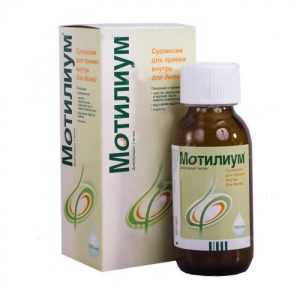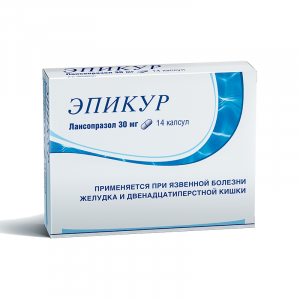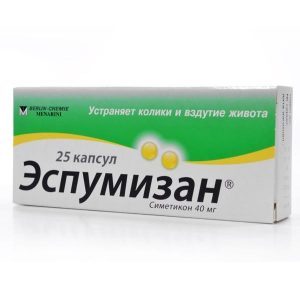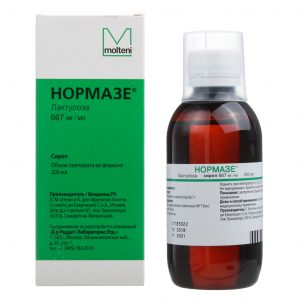Description
Packing
50 pcs
Pharmacological action
Metoclopramide – an antiemetic, helps reduce nausea, hiccups stimulate gastrointestinal motility. The antiemetic effect due to blockade of dopamine D2 receptors and an increase in the threshold of the trigger zone chemoreceptors is a blocker of serotonin receptors. It is believed that metoclopramide inhibits the relaxation of smooth muscle of the stomach caused by dopamine, thereby enhancing cholinergic reactions of the smooth muscles of the gastrointestinal tract. Helps to accelerate the emptying of the stomach by preventing relaxation of the body of the stomach and increasing the activity of the antrum and upper small intestine. Reduces the reflux of contents into the esophagus by increasing the pressure of the sphincter of the esophagus at rest and increases the clearance of acid from the esophagus due to an increase in the amplitude of its peristaltic contractions.
Metoclopramide stimulates prolactin secretion and causes a transient increase in circulating aldosterone, which may be accompanied by short-term fluid retention.
Indications
vomiting, nausea, hiccups of various origins (in some cases it can be effective for vomiting caused by radiation therapy or taking cytostatics)
atony and hypotension of the stomach and intestines (in particular, postoperative)
biliary dyskinesia of the biliary tract Esophagitis
flatulence
functional pyloric stenosis.
as part of the complex treatment of exacerbations of gastric and duodenal ulcer
is used to enhance peristalsis during X-ray contrast studies of the gastrointestinal tract
as a means, facilitating duodenal sounding (to accelerate the emptying of the stomach and the movement of food through the small intestine).
Contraindications
bleeding from the gastrointestinal tract
stenosis of the pylorus
mechanical intestinal obstruction
perforation of the stomach wall or bowel
pheochromocytoma
epilepsy
glaucoma
extrapyramidal disorders
Parkinson’s disease
prolaktinozavisimye tumor
vomiting during therapy or antipsychotic drugs overdose in patients
breast cancer bronchial asthma in patients with hypersensitivity to
sulfites pregnancy (I trimester), lact period
anions early childhood (for children under 2 years of age – the use of metoclopramide in the form of any dosage forms is contraindicated for children under 6 years of age, parenteral administration is contraindicated)
hypersensitivity to metoclopramide or any of the components of the drug.
Do not prescribe after gastrointestinal surgery (such as pyloroplasty or intestinal anastomosis), since vigorous muscle contractions interfere with healing.
If you are hypersensitive to metoclopramide or other components of the drug, be sure to consult your doctor before taking it.
Precautions: bronchial asthma, arterial hypertension, Parkinson’s disease, renal and / or liver failure, advanced age (over 65 years), childhood (increased risk of developing dyskinetic syndrome).
Pregnancy and lactation
Contraindicated in pregnancy.
When used during lactation (breastfeeding), it should be borne in mind that metoclopramide passes into breast milk.
In experimental studies, no adverse effects of metoclopramide on the fetus were found.
Composition
1 tablet contains:
Active ingredient: metoclopramide hydrochloride 10 mg
Excipients: lactose starch corn talc purified magnesium stearate sodium starch starch glycolate silicon colloidal anhydrous.
Dosage and administration
Tablets are taken 30 minutes before a meal with a little water. Adults – 5-10 mg 3-4 times a day. The maximum single dose is 20 mg, daily – 60 mg. Children over 6 years old – 5 mg 1-3 times a day.
Side effects
From the digestive system: at the beginning of treatment, constipation is possible, diarrhea is rare – dry mouth.
From the side of the central nervous system: at the beginning of treatment, a feeling of tiredness, drowsiness, dizziness, headache, depression, akathisia are possible. Extrapyramidal symptoms may occur in children and young adults (even after a single use of metoclopramide): facial muscle spasm, hyperkinesis, spasmodic torticollis (usually go away immediately after stopping metoclopramide). With prolonged use, more often in elderly patients, the phenomena of parkinsonism, dyskinesia are possible.
From the hematopoietic system: agranulocytosis is possible at the beginning of treatment.
From the endocrine system: rarely, with prolonged use in high doses – galactorrhea, gynecomastia, menstrual irregularities.
Allergic reactions: rarely – skin rash.
º °Ñ ÑÑ ² ½ ½ ¾ ² · ° ¸ ¼ ¾ ´ ¹ÑÑ ² ¸
Ñ ¸ ¾ ´ ½ ¾ ²Ñ ¼ ½ ½ ¾ ¼ ¿Ñ ¸ ¼ ½ ½ ¸ ¸ Ñ ° ½Ñ ¸Ñ ¾ » ¸ ½ Ñ ³ ¸Ñ Ñ º ¸ ¼ ¸ ÑÑ ´ÑÑ ² ° ¼ ¸ ² ¾ · ¼ ¾ ¶ ½ ¾ ² · ° ¸ ¼ ½ ¾ ¾Ñ » ° ± » ½ ¸ ÑÑÑ ºÑ ¾ ².
Ñ ¸ ¾ ´ ½ ¾ ²Ñ ¼ ½ ½ ¾ ¼ ¿Ñ ¸ ¼ ½ ½ ¸ ¸ Ñ ½ ¹Ñ ¾ » ¿Ñ ¸ º ° ¼ ¸ ( ¾Ñ ¾ ± ½ ½ ¾ Ñ ½ ¾Ñ ¸ ° · ¸ ½ ¾ ² ¾ ³ ¾ Ñ Ñ ´ ° ¸ ¿Ñ ¾ ¸ · ² ¾ ´ ½ Ñ ±ÑÑ ¸Ñ ¾Ñ ½ ¾ ½ °) ¿ ¾ ² Ñ ° Ñ ÑÑ Ñ ¸Ñ º ² ¾ · ½ ¸ º ½ ¾ ² ½ ¸Ñ Ñ ºÑÑ Ñ ° ¿ ¸Ñ ° ¼ ¸ ´ ½ Ñ Ñ ° ºÑ ¸ ¹.
Ñ ¸ ¾ ´ ½ ¾ ²Ñ ¼ ½ ½ ¾ ¼ ¿Ñ ¸ ¼ ½ ½ ¸ ¸ ÑÑ ¸ » ¸ ² ° Ñ ÑÑ ° ±Ñ ¾Ñ ±Ñ ¸Ñ °Ñ Ñ ¸ »Ñ ° » ¸Ñ ¸ » ¾ ² ¾ ¹ º ¸Ñ » ¾Ñ , ¿ °Ñ °Ñ Ñ ° ¼ ¾ » °, ÑÑ ° ½ ¾ » °.
Ñ ¾ º » ¾ ¿Ñ ° ¼ ¸ ´ ¿Ñ ¸ ²/ ² ² ² ´ ½ ¸ ¸ ¿ ¾ ² Ñ ° Ñ Ñ º ¾Ñ ¾ÑÑ Ñ ° ±Ñ ¾Ñ ±Ñ ¸ ¸ ´ ¸ ° · ¿ ° ¼ ° ¸ ¿ ¾ ² Ñ ° Ñ ³ ¾ ¼ ° ºÑ ¸ ¼ ° »Ñ ½ÑÑ º ¾ ½Ñ ½Ñ Ñ °Ñ ¸Ñ ² ¿ » ° · ¼ ºÑ ¾ ² ¸.
Ñ ¸ ¾ ´ ½ ¾ ²Ñ ¼ ½ ½ ¾ ¼ ¿Ñ ¸ ¼ ½ ½ ¸ ¸ Ñ ¼ ´ » ½ ½ ¾ Ñ °ÑÑ ² ¾Ñ ÑÑÑ ¹ÑÑ » º °Ñ ÑÑ ² ½ ½ ¾ ¹ Ñ ¾Ñ ¼ ¾ ¹ ´ ¸ ³ ¾ ºÑ ¸ ½ ° ² ¾ · ¼ ¾ ¶ ½ ¾ Ñ ¼ ½ÑÑ ½ ¸ º ¾ ½Ñ ½Ñ Ñ °Ñ ¸ ¸ ´ ¸ ³ ¾ ºÑ ¸ ½ ° ² Ñ ² ¾Ñ ¾Ñ º ºÑ ¾ ² ¸ ½ ° 1/3. Ñ ¸ ¾ ´ ½ ¾ ²Ñ ¼ ½ ½ ¾ ¼ ¿Ñ ¸ ¼ ½ ½ ¸ ¸ Ñ ´ ¸ ³ ¾ ºÑ ¸ ½ ¾ ¼ ² ¶ ¸ ´ º ¾ ¹ » º °Ñ ÑÑ ² ½ ½ ¾ ¹ Ñ ¾Ñ ¼ ¸ » ¸ ² ² ¸ ´ ± ÑÑ Ñ ¾Ñ °ÑÑ ² ¾Ñ ¸ ¼ ¾ ¹ » º °Ñ ÑÑ ² ½ ½ ¾ ¹ Ñ ¾Ñ ¼ ² · ° ¸ ¼ ¾ ´ ¹ÑÑ ² ¸Ñ ½ ¾Ñ ¼ Ñ ½ ¾.
Ñ ¸ ¾ ´ ½ ¾ ²Ñ ¼ ½ ½ ¾ ¼ ¿Ñ ¸ ¼ ½ ½ ¸ ¸ Ñ · ¾ ¿ ¸ º » ¾ ½ ¾ ¼ ÑÑ º ¾Ñ Ñ Ñ ÑÑ ° ±Ñ ¾Ñ ±Ñ ¸Ñ · ¾ ¿ ¸ º » ¾ ½ ° Ñ º ° ± Ñ ³ ¾ » ¸ ½ ¾ ¼ – ² ¾ · ¼ ¾ ¶ ½ ¾ Ñ ¼ ½ÑÑ ½ ¸ ÑÑÑ ºÑ ¸ ² ½ ¾ÑÑ ¸ º ° ± Ñ ³ ¾ » ¸ ½ ° Ñ º Ñ ¾ ¿Ñ ¾Ñ ½ ¾ ¼ – Ñ ¼ ½ÑÑ ° Ñ ÑÑ ± ¸ ¾ ´ ¾ÑÑ Ñ ¿ ½ ¾ÑÑ Ñ º Ñ ¾ ¿Ñ ¾Ñ ½ °.
Ñ » ´ÑÑ ² ¸ ° ½Ñ ° ³ ¾ ½ ¸ · ¼ ° ² ¾Ñ ½ ¾Ñ ½ ¸ ¸ ´ ¾ ¿ ° ¼ ¸ ½ ¾ ² Ñ Ñ Ñ ¿Ñ ¾Ñ ¾ ² ¼ Ñ ¾ º » ¾ ¿Ñ ° ¼ ¸ ´ ¼ ¾ ¶ Ñ Ñ ¼ ½ÑÑ °Ñ Ñ ¿Ñ ¾Ñ ¸ ² ¾ ¿ °Ñ º ¸ ½Ñ ¾ ½ ¸Ñ Ñ º ¾ ´ ¹ÑÑ ² ¸ » ² ¾ ´ ¾ ¿ , ¿Ñ ¸ ÑÑ ¾ ¼ ² ¾ · ¼ ¾ ¶ ½ ¾ ¿ ¾ ² Ñ ½ ¸ ± ¸ ¾ ´ ¾ÑÑ Ñ ¿ ½ ¾ÑÑ ¸ » ² ¾ ´ ¾ ¿ ²Ñ » ´ÑÑ ² ¸ ÑÑ º ¾Ñ ½ ¸Ñ Ñ ² ° ºÑ °Ñ ¸ ¸ ¸ · ¶ »Ñ ´ º ° ¿ ¾ ´ ² » ¸Ñ ½ ¸ ¼ ¼ Ñ ¾ º » ¾ ¿Ñ ° ¼ ¸ ´ °. ·Ñ »ÑÑ °Ñ ² · ° ¸ ¼ ¾ ´ ¹ÑÑ ² ¸Ñ ½ ¾ ´ ½ ¾ · ½ °Ñ ½ .
Ñ ¸ ¾ ´ ½ ¾ ²Ñ ¼ ½ ½ ¾ ¼ ¿Ñ ¸ ¼ ½ ½ ¸ ¸ Ñ ¼ ºÑ ¸ » Ñ ¸ ½ ¾ ¼ ÑÑ º ¾Ñ Ñ Ñ ÑÑ ° ±Ñ ¾Ñ ±Ñ ¸Ñ ¼ ºÑ ¸ » Ñ ¸ ½ ° Ñ ¼ Ñ » ¾Ñ ¸ ½ ¾ ¼ – ¿ ¾ ² Ñ ° Ñ ÑÑ Ñ º ¾Ñ ¾ÑÑ Ñ ° ±Ñ ¾Ñ ±Ñ ¸ ¸ ¼ Ñ » ¾Ñ ¸ ½ ° ¸ ³ ¾ º ¾ ½Ñ ½Ñ Ñ °Ñ ¸Ñ ² ¿ » ° · ¼ ºÑ ¾ ² ¸, ¿Ñ ¸ ÑÑ ¾ ¼ ² ¾ · ¼ ¾ ¶ ½ ¾ Ñ ¼ ½ÑÑ ½ ¸ ³ ¾ ¿ ¾ ± ¾Ñ ½ Ñ ÑÑÑ ºÑ ¾ ².
Ñ ¸ ¾ ´ ½ ¾ ²Ñ ¼ ½ ½ ¾ ¼ ¿Ñ ¸ ¼ ½ ½ ¸ ¸ Ñ ¼ ¾Ñ Ñ ¸ ½ ¾ ¼ ÑÑ º ¾Ñ Ñ Ñ ÑÑ ° ±Ñ ¾Ñ ±Ñ ¸Ñ ¼ ¾Ñ Ñ ¸ ½ ° ¿Ñ ¸ ¿Ñ ¸ ¼ ² ½ÑÑ Ñ Ñ ¸ ÑÑ ¸ » ¸ ² ° Ñ ÑÑ ³ ¾ Ñ ´ °Ñ ¸ ² ½ ¾ ´ ¹ÑÑ ² ¸ .
Ñ ¸ ¾ ´ ½ ¾ ²Ñ ¼ ½ ½ ¾ ¼ ¿Ñ ¸ ¼ ½ ½ ¸ ¸ Ñ ½ ¸Ñ Ñ ¾ÑÑÑ ° ½Ñ ¾ ¸ ½ ¾ ¼ Ñ ¼ ½ÑÑ ° Ñ ÑÑ ° ±Ñ ¾Ñ ±Ñ ¸Ñ ½ ¸Ñ Ñ ¾ÑÑÑ ° ½Ñ ¾ ¸ ½ °.
Ñ ¸ ¿Ñ ¸ ¼ ½ ½ ¸ ¸ ¼ Ñ ¾ º » ¾ ¿Ñ ° ¼ ¸ ´ ° ½ ¿ ¾ÑÑ ´ÑÑ ² ½ ½ ¾ ¿ Ñ ´ ² ² ´ ½ ¸ ¼ ¿Ñ ¾ ¿ ¾Ñ ¾ » ° ¸ » ¸ Ñ ¸ ¾ ¿ ½Ñ ° » ° ¼ ¾ ¶ Ñ ¿ ¾Ñ Ñ ± ¾ ² °Ñ ÑÑÑ Ñ ¼ ½ÑÑ ½ ¸ ¸Ñ ¸ ½ ´Ñ ºÑ ¸ ¾ ½ ½ Ñ ´ ¾ ·.
£ ¿ °Ñ ¸ ½Ñ ¾ ², ¿ ¾ »ÑÑ °ÑÑ ¸Ñ ¼ Ñ ¾ º » ¾ ¿Ñ ° ¼ ¸ ´, ÑÑ ¸ » ¸ ² °ÑÑ ÑÑ ¸ ¿Ñ ¾ » ¾ ½ ³ ¸Ñ ÑÑÑ ÑÑ ÑÑÑ ºÑ ÑÑ ºÑ ° ¼ Ñ ¾ ½ ¸Ñ Ñ » ¾Ñ ¸ ´ °.
Ñ ¸ ¾ ´ ½ ¾ ²Ñ ¼ ½ ½ ¾ ¼ ¿Ñ ¸ ¼ ½ ½ ¸ ¸ Ñ Ñ ¾ »Ñ Ñ ¾ ´ ¸ ½ ¾ ¼ Ñ ¼ ½ÑÑ ° Ñ ÑÑ ÑÑÑ ºÑ ¸ ² ½ ¾ÑÑ Ñ ¼ Ñ ¾ º » ¾ ¿Ñ ° ¼ ¸ ´ ° Ñ Ñ »Ñ ² ¾ ºÑ ° ¼ ¸ ½ ¾ ¼ – ¾ ¿ ¸Ñ ° ½ Ñ »ÑÑ ° ¹ Ñ ° · ² ¸Ñ ¸Ñ Ñ ºÑÑ Ñ ° ¿ ¸Ñ ° ¼ ¸ ´ ½ Ñ ½ °Ñ ÑÑ ½ ¸ ¹ Ñ Ñ »Ñ ¾ ºÑ Ñ ¸ ½ ¾ ¼ – ¸ ¼ Ñ ÑÑ Ñ ¸Ñ º Ñ ° · ² ¸Ñ ¸Ñ Ñ ºÑÑ Ñ ° ¿ ¸Ñ ° ¼ ¸ ´ ½ Ñ ½ °Ñ ÑÑ ½ ¸ ¹ Ñ Ñ ¸ º » ¾Ñ ¿ ¾Ñ ¸ ½ ¾ ¼ – ¿ ¾ ² Ñ ° Ñ ÑÑ ° ±Ñ ¾Ñ ±Ñ ¸Ñ Ñ ¸ º » ¾Ñ ¿ ¾Ñ ¸ ½ ° ¸ Ñ ² » ¸Ñ ¸ ² ° Ñ ÑÑ ³ ¾ º ¾ ½Ñ ½Ñ Ñ °Ñ ¸Ñ ² ¿ » ° · ¼ ºÑ ¾ ² ¸.
Overdose
Hypersomnia, disorientation and extrapyramidal disorders may be noted. As a rule, the symptomatology disappears after discontinuation of the drug for 24 hours. If necessary, treatment with cholin blockers and antiparkinsonian agents is carried out.
Storage conditions
In a dry, dark place, at a temperature not exceeding 25 ° C.
The Expiration of
is 3 years.
Active ingredient
Metoclopramide
Pharmacy terms
Prescription
dosage form
Formulation
tablets
Polarma, Poland




